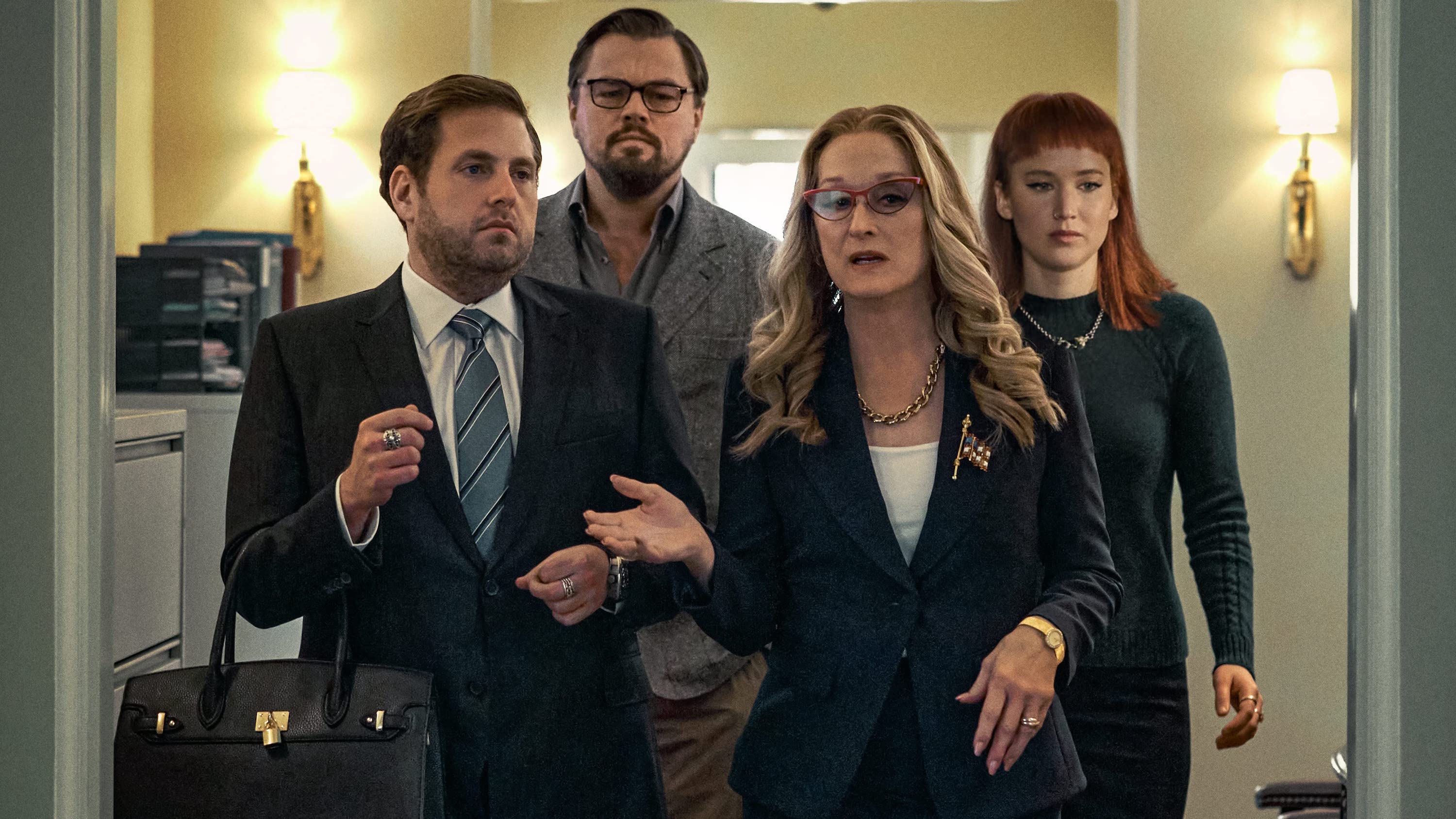From Netflix’s ‘Red Notice Recipe’ to Disney’s Bundle Fixation, How the Major Streaming Services Plan to Stand Out in an Ultra-competitive 2022
Bloom: 'Take a not-so-perfect project, add three (or more) big stars and hit ‘play’

It’s a new year, and for the big streaming services, a new era of brutal domestic competition, and expensive overseas expansion.

As the streaming services try to minimize churn and encourage viewers to stick around, they’ll have one short-term advantage: the pandemic’s omicron surge likely will keep many people at home for a while longer, regardless of what Consumer Electronics Show chief Gary Shapiro said this week about coming to his microbe-laced tech shindig in Las Vegas.
So what will the different streaming services do to attract and keep customers, who likely will be tempted by everyone else’s equally great stuff, not to mention what we all may hope will be the attractions of a slowly reopening world? I have a few prognostications, based on the companies’ own statements and actions:
Netflix
Netflix will likely lean more than ever on its vast network of international producers and projects. Less certain is whether those local producers will include the 20 state-financed channels it’s being required to run in Russia. I’m guessing Vlad’s propaganda machines don’t have any shows that can rival Lupin or La Casa de Papel in terms of global appeal.
More likely to help drive attention to at least some Netflix projects is what might be called the “Red Notice Recipe": take a not-perfect project, add three (or more) 1,000-watt stars to the cast, and hit “play.” That approach, one of the most time-honored in Hollywood history, made Red Notice one of Netflix’s most-watched films ever.
Also read: 'Don't Look Up' Opening = Boffo $442.2 Million at the Box Office? -- Netflix Global Top 10
And an all-star cast probably helped make Adam McKay’s Don’t Look Up the service’s most-watched movie of the holidays, despite its not very holiday-friendly satire about the end of the world. Regardless, fans cottoned to a cast featuring Leonardo DiCaprio, Jennifer Lawrence, Meryl Streep, Cate Blanchett and others. Even the writer/director, Adam McKay, is something of a celebrity, given his resume and former long association with Will Farrell.
The smarter way to stay on top of the streaming and OTT industry. Sign up below.
Plenty of other studios are relying on the super-cast approach, even (especially) for their theatrical releases. It’s even being used with the superhero movies, i.e., about the only films theater-going audiences will turn out to watch.
Spider-Man: No Way Home, 2021’s box office champ by a long way, was basically a greatest hits of the franchise, featuring multiple past Spideys and previously vanquished arch-villains such as Oscar nominee Willem Dafoe’s Green Goblin. Nightmare Alley from Disney’s Searchlight Pictures is equally filled with Very Famous People. It’s worth noting, however, that only one of the two films in this paragraph grossed more than $8 million in theaters, so expect films like Nightmare Alley to start skipping theaters altogether and head straight to streaming.
Given Netflix’s dearth of superhero franchises (especially after the one-season cancellation of the pricey Millarworld adaptation Jupiter’s Legacy), big-name stars are what’s left for Netflix as it tries to build feature franchises out of home-grown successes such as The Old Guard and Army of the Dead.
The biggest move might be one of more selectivity over the baser goal of more selection: Netflix executives said they’re going to make (slightly) fewer, preferably much bigger and more memorable feature projects.
Netflix film chief (and former long-time studio exec) Scott Stuber told The New York Times, “If you have the budget to make 14 movies and you only have 11 great ones, let’s just make 11,” he said. “That is what we need to aim toward because you really are in a deeply competitive world now, and you want to make sure that you’re delivering at a pace that people see greatness consistently instead of randomly.”
Disney Plus/Hulu/ESPN Plus
Disney spent much of the holidays (and ESPN’s endless college football bowl season) touting content from across its three streaming services as part of a bundle of all three, rather than shows on any one of the services.
Building the bundle seems like the most important thing going until Disney works out whether it will more deeply integrate the three disparate services and International outlet Star. We’re seeing hints of that with the current marketing, as Disney Plus tries to widen its content offerings to maintain growth in subscriber adds, which Wall Street demands, while still protecting its family-friendly brand.
Meanwhile, expect more mini-bundles aggregating various smaller players, driven in part by what looks like a hostile regulatory environment for more mega-mergers. As one example, Curiosity Stream built a “smart bundle” with five other niche providers, giving all six services a bigger footprint and perceived value.
Bundling also may ease the growing consumer frustration with trying to find where the week’s hot show is streaming. A recent international study by Accenture found that 60 percent of those surveyed consider the process of navigating among different services “a little” to “very” frustrating.
“Navigating through OTT services is like entering different rabbit holes, each with its own entry and exit,” the report says. That’s not good.
Consumers are more likely to take advantage of the best-of-the-week highlights that Apple TV, Google TV and Roku serve up. That’s great visibility for individual shows but terrible for the visibility of the services behind them. Think that doesn’t matter? If you can’t remember what shows ran where, you may be more inclined to hit the cancel button at the end of the month.
HBO Max/CNN Plus/Discovery Plus
HBO Max won’t have the Warner Bros. slate to bolster its lineup in 2022, but at least its production pipeline restarted, and it’s now making a dozen movies explicitly for HBO Max. That should help in what could be yet another year of uncertainty and dislocation as WarnerMedia prepares for a potential merger with Discovery.
One question facing the creators of films going to straight to HBO Max. Did they think at any point their project would get the full monte of theatrical distribution? By now, no one’s likely to have a Christopher Nolan-level meltdown over streaming strategies, but will “straight to streaming” seem like a post-modern take on the derisive distribution strategy of “straight to video”?
HBO and HBO Max had a fairly impressive 2021, adding 4.4 million more subs in the last quarter, after ditching a distribution deal with Amazon Prime Video at mid-year that initially cost them about 5 million customers. Company executives pointed to the wealth of high-profile HBO series like Mare of Easttown and Succession, that slate of Warner movies, and international expansion as reasons for the continued growth.
The company should be able to expect more growth in 2022, but given the uncertainties over who’s going to do be doing what by year’s end, it’s likely to be yet another year of behind-the-scenes chaos and disruption. Customers won’t care but Wall Street might.
Amazon Prime Video
Prime Video will count on the splash from its half-billion-dollar Lord of the Rings adaptation, coming in the fall, to pull along everyone else. Given the rapturous viewership that has accompanied its other big franchise swing, The Wheel of Time adaptation, it should be a warm fall for Amazon.
Peacock
NBCU will have one big card up its sleeve as it tries to make Peacock more attractive to customers actually paying full boat for its programming: another Olympics contest just months after Tokyo wrapped.
The Beijing Winter Olympics will eat up half of February, and Peacock just announced its Premium tier will show “every minute of every live event,” plus immediately available replays. That’s a a big deal if you’re into figure skating, snowboarding, biathlon, and similar chilly ventures.
Peacock also has greatly benefited from taking over WWE’s standalone service, not only grabbing a healthy bloc of ardent paying fans, but also setting up the stage for a broader expansion into other wrestling circuits and stars, and WWE’s own evolution into a broader notion of “sports entertainment.”
David Bloom of Words & Deeds Media is a Santa Monica, Calif.-based writer, podcaster, and consultant focused on the transformative collision of technology, media and entertainment. Bloom is a senior contributor to numerous publications, and producer/host of the Bloom in Tech podcast. He has taught digital media at USC School of Cinematic Arts, and guest lectures regularly at numerous other universities. Bloom formerly worked for Variety, Deadline, Red Herring, and the Los Angeles Daily News, among other publications; was VP of corporate communications at MGM; and was associate dean and chief communications officer at the USC Marshall School of Business. Bloom graduated with honors from the University of Missouri School of Journalism.

